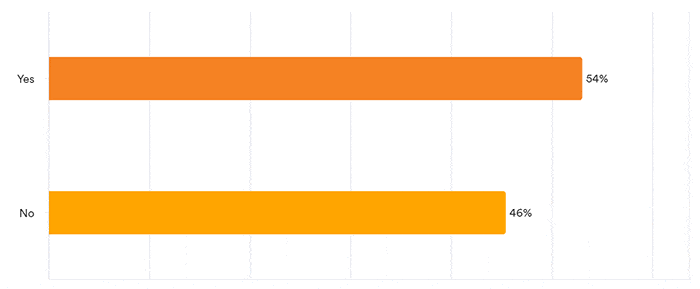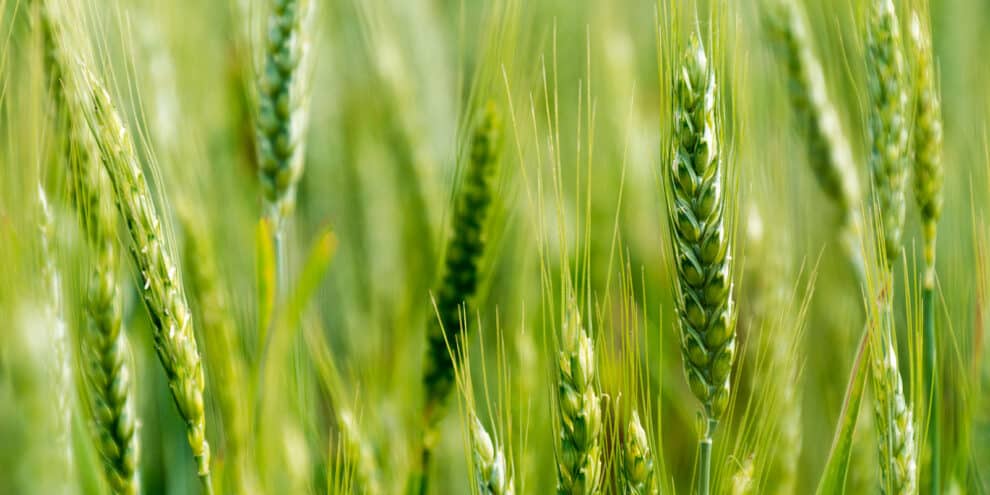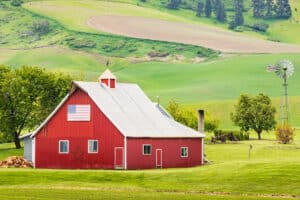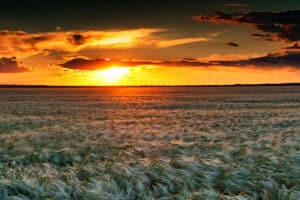The June LANDTHINK Pulse revealed that 54% of respondents think the federal government SHOULD allow emergency cropping on prime Conservation Reserve Program (CRP) land. Judging by the results of last month’s Pulse question, the general public is deeply divided on whether the federal government should open the 22.1 million acres of conserved land for crop production this year, to help address global commodity supply challenges caused by Russia’s invasion of Ukraine. As the war continues, there is growing concern over the implications this war will have on global food security and whether the United States may need to allow farmers to access CRP land in an effort to combat global food shortages, inflation and supply chain issues. Ukraine and Russia both play a major role in global food markets. They are net exporters of wheat, corn, and barley. Both countries together had accounted for about 75 percent of sunflower seed oil, a primary cooking oil in many parts of the world. Experts believe the conflict will negatively affect global grain flows for at least two crop years, and likely longer.
Last month, the June Pulse asked: In response to the global food crisis, should the federal government allow emergency cropping on prime Conservation Reserve Program (CRP) land?

The National Grain and Feed Association, American Bakers Association, American Farm Bureau Federation, Agricultural Retailers Association, National Oilseed Processors Association, North American Millers’ Association, and North American Export Grain Association are some of the groups that have urged the Biden administration to allow farmers to plant crops on currently idled land under the CRP program. These groups argue that if Ukraine is unable to safely plant crops this season there could be a humanitarian crisis across the global food supply chain.
According to the United States Department of Agriculture (USDA) 2017 National Resources Inventory, 26% of general CRP acres were “prime farmland,” which is defined as “land that has the best combination of physical and chemical characteristics for producing food, feed, forage, fiber, and oilseed crops…” The groups urged the USDA to provide flexibility to producers to plant crops on prime farmland enrolled in CRP without penalty, whether on an emergency basis or through an early-out of their current CRP contracts.
Typically, if a landowner terminates a CRP contract early, they must repay all previous CRP payments plus interest, plus a penalty. USDA currently can waive repayment requirements if the land is transferred to a beginning farmer or rancher through a sale or lease with an option to buy.
In April, Sens. Marco Rubio (R-Fla.) and Cynthia Lummis (R-Wyo.) as well as other GOP lawmakers, urged the Biden Administration to allow farmers to access millions of acres of conserved land in an effort to counter global supply shock.
Agriculture Secretary Tom Vilsack was not on board and turned down GOP requests to bring farmland out of conservation programs and back into production. In his written response, Vilsack pointed to several factors for his decision, including that only 1.3% of prime farmland is enrolled in CRP and that most of the CRP acres are less productive than other cropland.
“Additionally, a considerable proportion of currently enrolled CRP acres are in areas experiencing significant levels of drought. Production on those acres would be marginal at best, and there is no realistic way to convert all CRP acres into cropland in 2022. Even under non-drought scenarios, we know from historic data that acres coming out of CRP have significant ‘slippage,’ meaning that one acre coming out of CRP does not transfer into an acre of crop production, but closer to half that,” Vilsack said.
On May 26th, after repeated calls from U.S. Senator John Boozman (R-AR), ranking member of the Senate Committee on Agriculture, Nutrition, and Forestry, the USDA announced new plans to allow early termination of certain CRP acres to allow for increased food production to help offset global shortages of certain commodities.
Landowners with expiring CRP acres will receive a letter from the Farm Service Agency that detail this flexibility, organic options and CRP Continuous re-enrollment for sensitive acres. Landowners will be asked to make the request for voluntary termination in writing through their local USDA office. Since CRP land typically does not have a recent history of pesticide or herbicide application, USDA is encouraging landowners to consider organic production.
Landowners who leave the program early would normally have to return their payments, but the USDA said it would waive that requirement in this case as a way to encourage food production.
The CRP opt-out will bring little change in the Northeast, where very few counties have any land leaving the program this year. The majority of the 1.7 million acres coming out of CRP this year are in the West, with high concentrations of those acres in major wheat states such as Kansas, Montana and North Dakota.
If approved for voluntary termination, landowners can begin land preparation activities after the conclusion of the primary nesting season and plant a fall-seeded crop before October 1, 2022.
Our informal online survey revealed that 54% of those responding said “YES”, the federal government SHOULD allow emergency cropping on prime CRP land. Coming in a close second, 46% of our audience said “NO”, emergency cropping on CRP land SHOULD NOT be allowed.
Do you have a suggestion for next month’s Pulse question? Submit your question and we might choose yours!
This content may not be used or reproduced in any manner whatsoever, in part or in whole, without written permission of LANDTHINK. Use of this content without permission is a violation of federal copyright law. The articles, posts, comments, opinions and information provided by LANDTHINK are for informational and research purposes only and DOES NOT substitute or coincide with the advice of an attorney, accountant, real estate broker or any other licensed real estate professional. LANDTHINK strongly advises visitors and readers to seek their own professional guidance and advice related to buying, investing in or selling real estate.










It should be a great big NO for using CRP land. Not when we have these factory farms (in my area a dairy?) that are using the whole valley to grow corn used for cattle food. Not a small operation! There are so many of these farms in the US now that we are losing water and land for what? The nation needs better conservation laws (or rules) to stop what is going on. In my area there used to be wonderful acres of mesquite now the farmers(?) that have come in and cleared the valley of so much land. It is killing all the wildlife and disrupting the ecosystem. The mesquite is a highly nutritious and is drought resistant. It can be used for flour and even animal feed. Best of all it is not picky about the soil. When are we going to protect these the plants and animals that are native as well as conserve the land? The only reason the GOP wants to do this is that it will or might put $$$$$ in their pockets. I would hazard a guess that not many really care about the people or climate or anything else. We need someone to stand up to these people!
Global supply problem created by Russia? So it’s Ruskie saboteurs burning down and blowing up out food processing plants huh? Right. As a past president of a chapter of Pheasants Forever, statements like that make me ashamed that I ever was involved in the CRP program.
As long as they are banned from spraying or applying Glyphosate (Roundup) and other toxic poisons, I support opening the land.